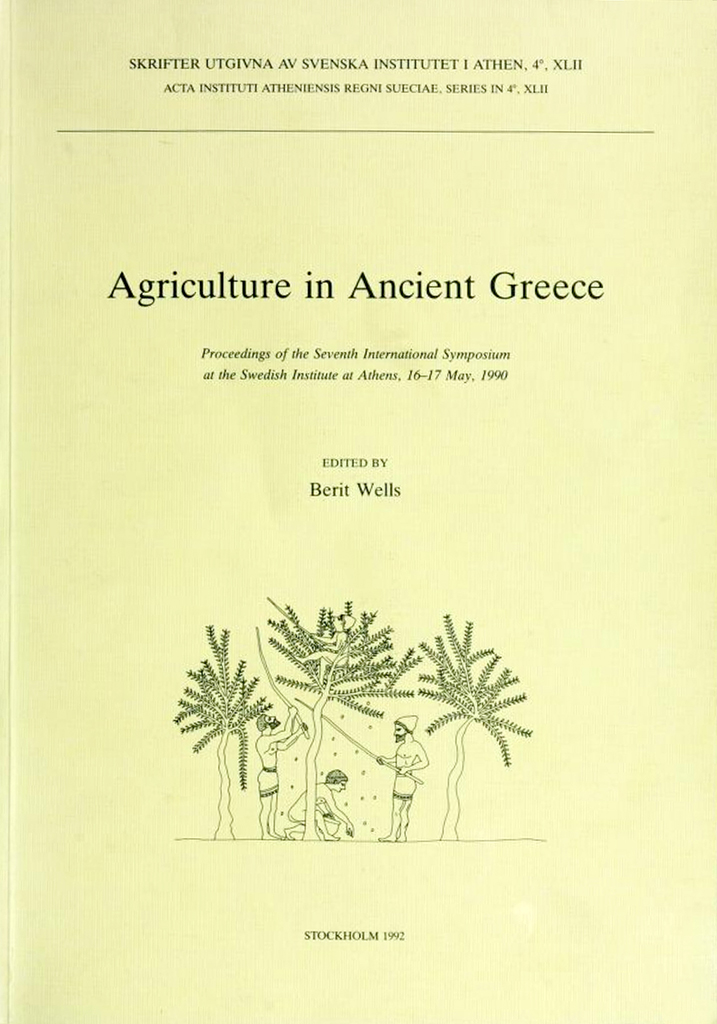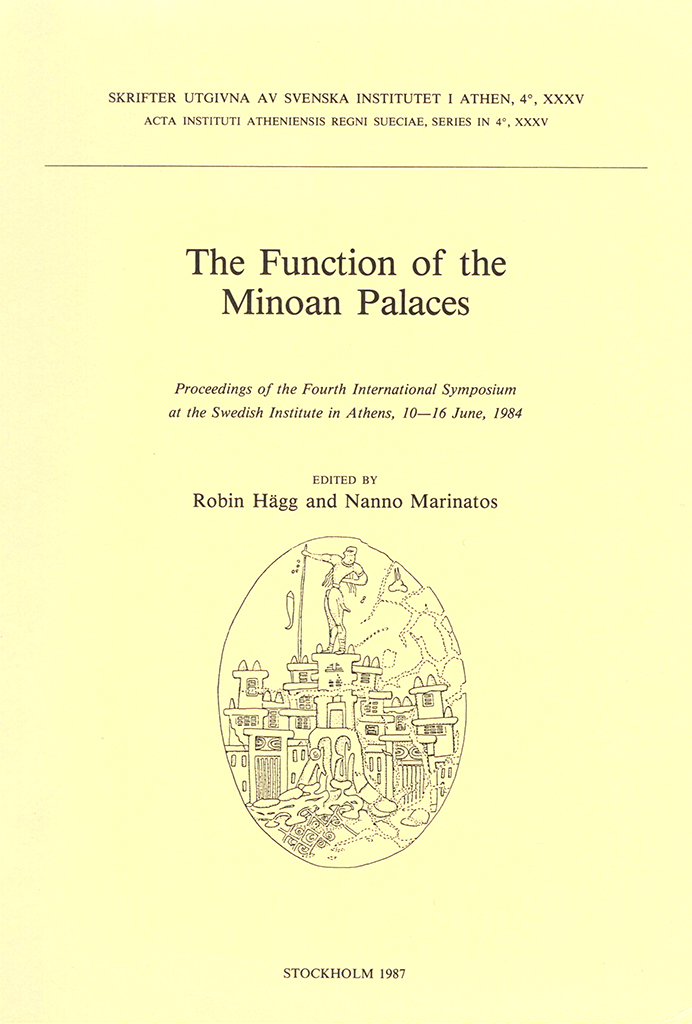Published by the Swedish Institute at Athens. Distributed by Astrom Editions. Agriculture in ancient Greece. Proceedings of the Seventh International Symposium at the Swedish Institute at Athens, 16–17 May 1990 Edited by Berit Wells Abstract These fourteen papers on ancient Greek agriculture were read, or emanated from the discussions during, an international conference in Athens; the papers are followed by transcripts of the discussions of the symposium. Two main themes are addressed: (1) production—how do we recognize a farm and what could be, and what was, produced on it? (2) and the organization of agriculture—who owned the land, who worked it and how, and how much did it yield? Contents Preface Jens Erik Skydsgaard, ‘Agriculture in ancient Greece. On the nature of the sources and the problems of their interpretation’, pp. 9–12. Eberhard Zangger, ‘Prehistoric and historic soils in Greece: Assessing the natural resources for agriculture’, pp. 13–18. Robin Osborne, ‘‘Is it a farm?’ The definition of agricultural sites and settlements in ancient Greece’, pp. 21–25. Hans Lohmann, ‘Agriculture and country life in Classical Attica’, pp. 29–57. ‘Discussion after first section on production’. Anaya Sarpaki, ‘The Paleoethnobotanical approach. The Mediterranean triad or is it a quartet?’, pp. 61–75. Marie-Claire Amouretti,…
Published by the Swedish Institute at Athens. Distributed by Astrom Editions. The function of the Minoan palaces. Proceedings of the Fourth International Symposium at the Swedish Institute in Athens, 10–16 June, 1984 Edited by Robin Hägg & Nanno Marinatos Abstract Fourty-seven papers on the functions of the palace, the most characteristic phenomenon of the Minoan Bronze Age civilization in Crete, read at an international conference in Athens; the papers are followed by transcripts of the discussion of the symposium. The papers are arranged in eight groups, discussing (1) background (Near Eastern and Egyptian economy), parallels (Mycenaean palaces) and methodology; (2) the emergence of the Cretan palaces; (3) the relations of the palace with town and territory; (4) recent archaeological finds; (5) the palaces as ceremonial and religious centres; (6) the palaces as centres of trade and manufacture; (7) the administrative systems of the Minoans and Mycenaeans; and (8) the function of the frescoes in the palace. For James Walter Graham and to the memory of Spyridon Marinatos. Contents ‘Preface’, p. 9 Background and methodology Benjamin R. Foster, ‘The Late Bronze Age palace economy: A view from the East’, pp. 11–16 Wolfgang Helck, ‘The dissolution of the palace economy in the…


